Which SFC jigs to use in different conditions?
I’m writing in response to questions about which jig types to use in different conditions and tactics. I’m just sharing my own personal preferences. Remember the jig choice possibility is unlimited. You can be creative with the different action tone (rod power and jig weight combination) too. I just hope this will help you classify jig types.
What jig for the first drop?
When you get to the first fishing point of the day, one of the purposes to choose the first jig to drop is to evaluate the conditions. I recommend to use the same jig as the pilot jig so that you can build up the sense to know how vertical you are, how the bottom current is moving, and what kind of fish will be interested, what kind of action is effective and so on.
Arc
Arc is what I recommend. It’s such a versatile semi-long jig. Adaptive to any conditions, Fast to fall, great in uplifts and also in falls. Ideal for the scouting jig. If you really get to know this jig, you can pick up a lot of information about what’s going on down there. Pay attention to how it lifts (light or heavy), how long it slides (long or short), and how it falls (fast or slow).

What jigs for slow conditions?
Sometimes the bottom current is not moving and the fish is slow. Even though you see fish one the fish locator, they are not biting.
Rector
Rector is such an effective, proven jig. Good for any fish. Works very well in uplifts and in falls. It falls like a falling leaf. Slow application or fast. Strong action or soft. As long as you are in the light water situation, Rector will do the job.
The only downside is that it’s slow to fall. When you are not in the vertical alignment, you don’t want to use this jig.

Secret Rector
Secret Rector is Rector with ditches on the belly. It lifts lighter and slides longer at the end of the lifts. Bigger horizontal range of movement. So when you want to show more lifts with some energy, use Secret Rector. When you want to show lifts and falls, use Rector.
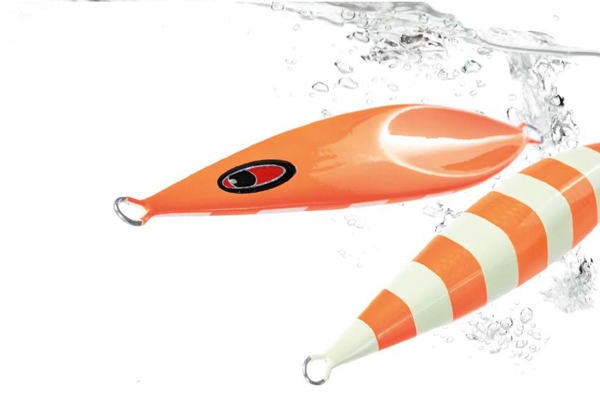
Abyss
Abyss is pretty versatile but especially effective in falls. It’s a very technical jig and such fun to play with because the jig is so sensitive to your different actions. If you give no tension on the falls, the jig falls slow in random actions. If you give a little tension on the falls, the jig slashes down fast.
So, always make sure you are fast to go to one direction, and slow to the other direction. Lift slow when you fall fast. Lift fast when you fall slow. Make that change of pace. Do not go fast up and down. If you manage the line tension in up and down, this jig is great to work with.
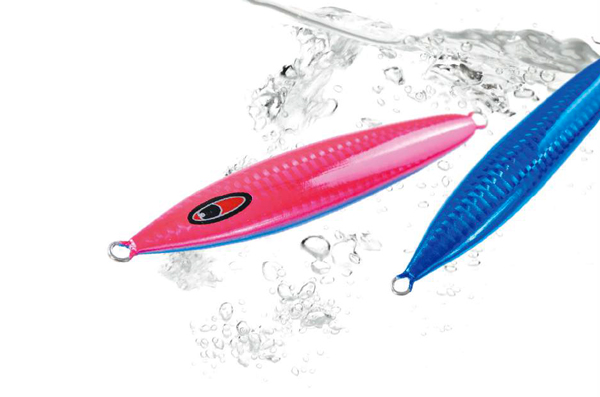
Gawky
Gawky is the fall game specialist. Lift flow with the soft action tone, and let it free fall. This is the first jig in Slow Pitch Jigging history that proved the falls actually work. Fall is a sign of weakness. It is effective especially when the fish is slow and only interested in easy targets.
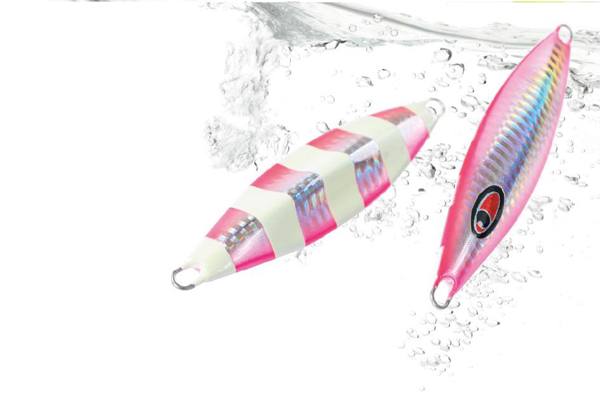
What jigs for non-vertical alignment?
When you are free-drifting, sometimes the wind pushes your boat and you can’t stay vertical. This is a heavy water situation. When you pull up the the rod, the water feels heavy and your line feels like a rubber band. What you can do is to use light line and heavy jig to keep your line as straight as possible with the jig.
When you are not vertical and pulling away from your jig fast, don’t use Rector because it falls too slow. And don’t use Gawky because the application is likely to use many falls, which will allow the jig to be pulled away.
Spunky
Spunky is fast-to-fall, light-action jig. For the normal use of this jig, when you want to show energetic action, you want to use this jig in strong action tone. But when the condition is tough and it’s hard to stay vertical, this jig does a great job in soft action tone (heavy jig weight for the rod power) too in the heavy water situation.
The downside is that it lifts light and fast, and it falls fast. Going fast up and down is a sign of unpredictability. Everyone stays away from the crazy boy. In the light water condition, play energetic actions with not much falls. lift fast, give it a punch, this jig flies, and reel in as it falls, and lift fast… It will be fast paced application with short falls. But in the heavy water situation, while other jigs have trouble following your actions, this jig can play. In the heavy water situation, the fall won’t be fast.
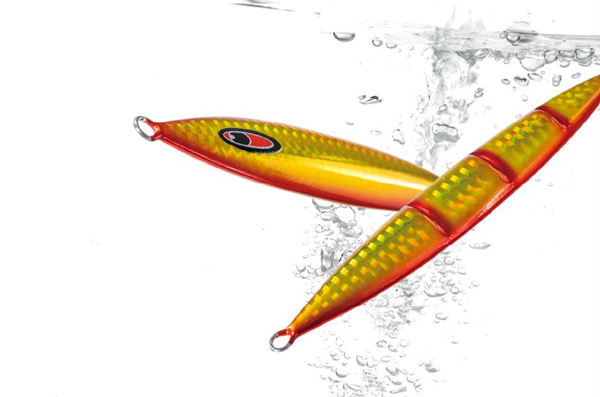
Arrow
Arrow is the latest addition to SFC jigs. It was designed specifically for free-drifting situation. Very fast to fall, and very sensible to respond. Try not to use fall actions much. Imagine that it suspends in the water at the end of the lifts. It’s great for Tuna too.

Arc
Arc is also a great jig to go to when the water is heavy.
What jigs for deep waters?
I’d say 150m+ deep waters as being on the spankered boat. If you are free-drifting, you can say 100m+ deep waters.
Cranky
Cranky is very responsive jig. It doesn’t work well with big actions but very effective by small short rod actions, in general. When you go deep, all your actions on the boat is minimized at the jig. That makes this jig great in the deep. Available in heavy weight as 500g+ too.
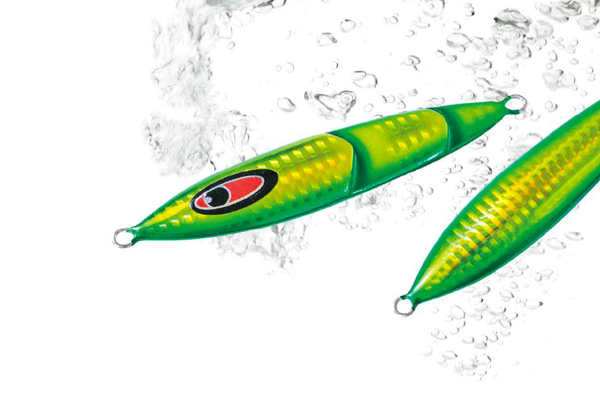
Gawky
Gawky is specifically designed for fall actions in deep waters. Available in heavy weight as 900g.
Arc
Arc is also a great jig to go to when the water is deep.
This is condition-oriented classification. Each jig type is NOT limited to above conditions. In the field, I try every jig types until I find the lucky jig.
Tags In
Related Posts
10 Comments
Leave a Reply Cancel reply
Categories
- 1. SPJ (57)
- 1-1. Principles (9)
- 1-2. Techniques (11)
- 1-3. Setup (17)
- 1-4. FAQ (19)
- 1-5. Tackles (3)
- 1-6. Video Gallery (2)
- 2. Other Offshore Games (5)
- 3. Fishing Report (105)
- 3-1. Totos (25)
- 3-2. Readers (72)
- 4. Fish Cooking (19)
- 4-1. Iki-Jime (3)
- 4-2. The Art of Sashimi (5)
- 4-3. Recipe (7)
- 4-4. Seasoning (3)
- 5. Fishing Charter (6)
- Fish (12)

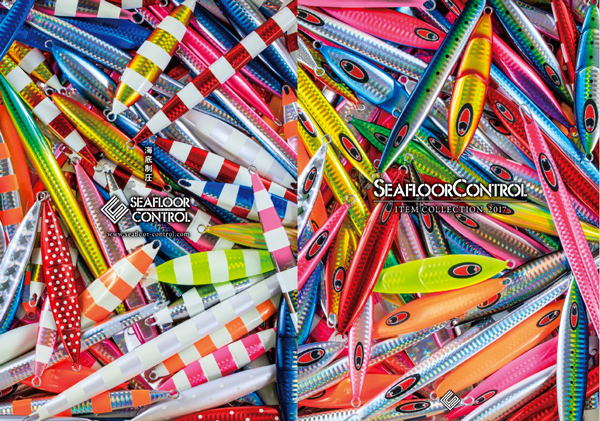




Dear Totos
I am really grateful for all the information you share with us, non-Japanese speakers.
Thank you so much for this information. It is indeed a great, helpful summary.
I’ll sent my order asap.
Kind regards
José
Hi Totos,
In my last trip I was purely using slow fall jigs, I lost a total of 4 jigs due to snags at the bottom structure. The captain asked me to remove the lower pair of assist hooks, leaving only one pair of hooks. This is supposed to reduce possibility of snag, but this may also reduce the chances of hookups. I reluctantly do so as I am worried it reduce my chances of hook up as my Assist hooks is only extending 2 cm length from the ring, a bit short in my opinion.
My question is whether it is necessary to do so (2 pair of hooks, ie. 4 hooks on one jig.?) I have tri d my best to jig as a fast and as soon as the jig hit bottom. But due to layered current, there may. E fast current at the bottom, which is hard for me to tell.
And secondly as I have lost some expensive jigs which is pretty costly to me, I am now looking at effective jigs at lower price from Shimano, Daiwa and so on. Is there any recommendations? I am hoping for something that has similar action to the CX.
Thank you Totos.
Hi SPJ.
I’m sorry to hear about your struggle. I will write about snagging when I have a chance.
If the boat is free-drifting (not vertical), it is easy to get snagged and it is hard to get out of snag.
Fish always try to bite on the head of the prey. It is the most sure way to stop the prey. Your jig should have painted eye, but it really doesn’t matter. To fish, the front of the movement is the head. In slow pitch jigging, we use a lot of falls, right? When the jig is falling, the tail is the head and that is where fish will attack.
There are other reasons for 2 x double assist hook system. We’ve gone through all the snagging problems, hook-off or hook-break problems, and all. And we stay with this system. There are all the reasons in details.
When you took off the tail hooks, did it solve your snagging problem?
If it did, maybe you should take it off. When you are not vertical from free-drifting boat, you should not use much falls anyway. Falls will create more line slack and put your jig out of your control. You can do slow pitch actions without falls, right?
If you want another solution, you can change the hook.
Check this out.
http://anglers-secrets.com/v2020/in-depth-study-on-hooks-for-slow-pitch-jigging/
Good luck.
Hi Totos
how can I do slow pitch without falls ? how come and as you said before most hits comes from fall !!
Hi Spyfun.
Well, most contacts come when the jig is on its side. It includes falls, as you pointed out, and suspension. In other words, contacts come when you are lowering your rod. So, when you don’t want the jig to fall, you want to reel when you lower the rod. Reel half a crank when you lower the rod, reel the other half a crank when you lift up the rod. This will give jig actions with little falls.
There can be some occassions that you don’t want to make falls. When you are not vertical and the wind is pushing your boat away from your jig, if you make falls, that means you leave the line not tensioned and that would put your jig further out of your control. When you don’t want snagging and take the tail hook out, fish will bite on the tail on the falls, so you would want to make liftups and suspension but little falls. Different priorities and we have to be flexible.
Hi Totos,
I own several slow fall jigs from Deepliner, SFC, Shimano etc. But recently I am researching into Beat jigs such as Dual Star, Trigger, Beeline Skim. I purchased one of each type.
There are very little or no information in English sites and YouTube on Beat Metal jigs and how they perform underwater.
Can you share your insights about this famous brand Beat ?
I have heard about Beat Propagate Rod but how does their metal jigs perform ?
Thank you,
SPJ.
Hi SPJ.
I’ve never used Beat jigs in the field. You know, you really have to use jigs in different fields, in different conditions, and with different set-up, to get to know them. So the following is just my simple observation.
DUALSTAR — I think this is like a combination of Spunky and Rector. Light lifting actions and active fall actions.
TRIGGER — This is a highpitch jig. Not much to say about highpitch jig because there isn’t much action variations you can do with highpitch jigs.
BEELINE SKIM — BEELINE (normal) can be considered as the signature jig for Beat. Action is similar to Rector. Lifts and hovers like Cranky and falls slow like Rector. This BEELINE SKIM is a thinner in shape, more light and sliding in uplifts.
Hi Totos,
Thank you very much for your website which is full of useful information for long period of time.
Do you have any experience with FCL Labo jigs? Can you write something about them?
Thank you very much once again,
Zoran
Hi Totos
Have you noticed the new Sea floor control jig called NOVA?
Could you tell us something about it (I only found japanse descriptions)?
Thank you, Daniel
Nova is a speed jig for spinning tackle, targetting pelagic like yellowtails.